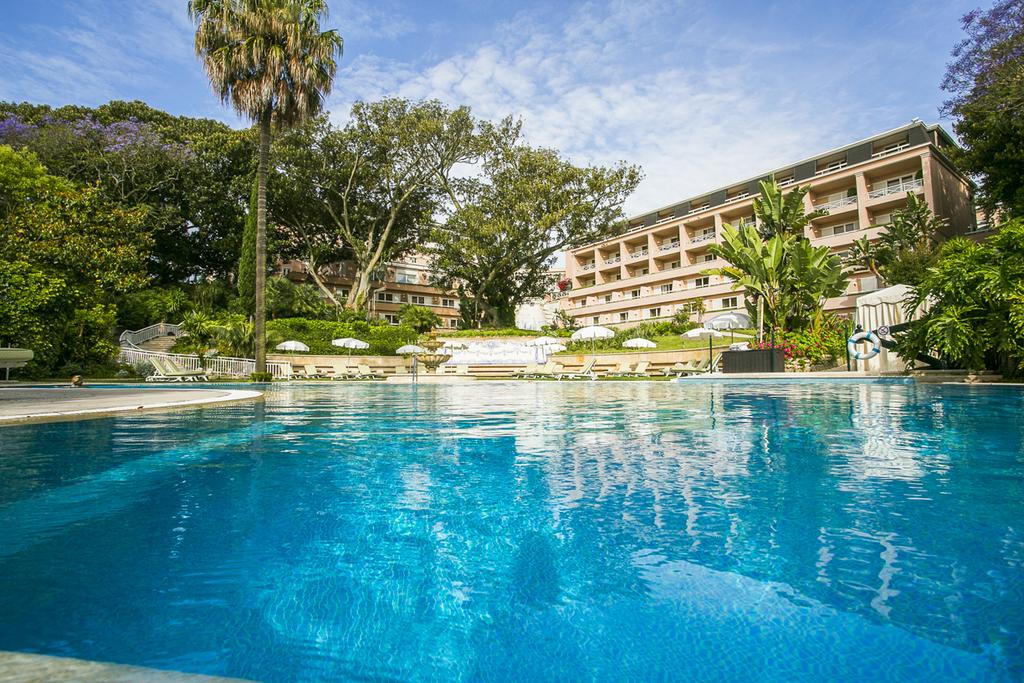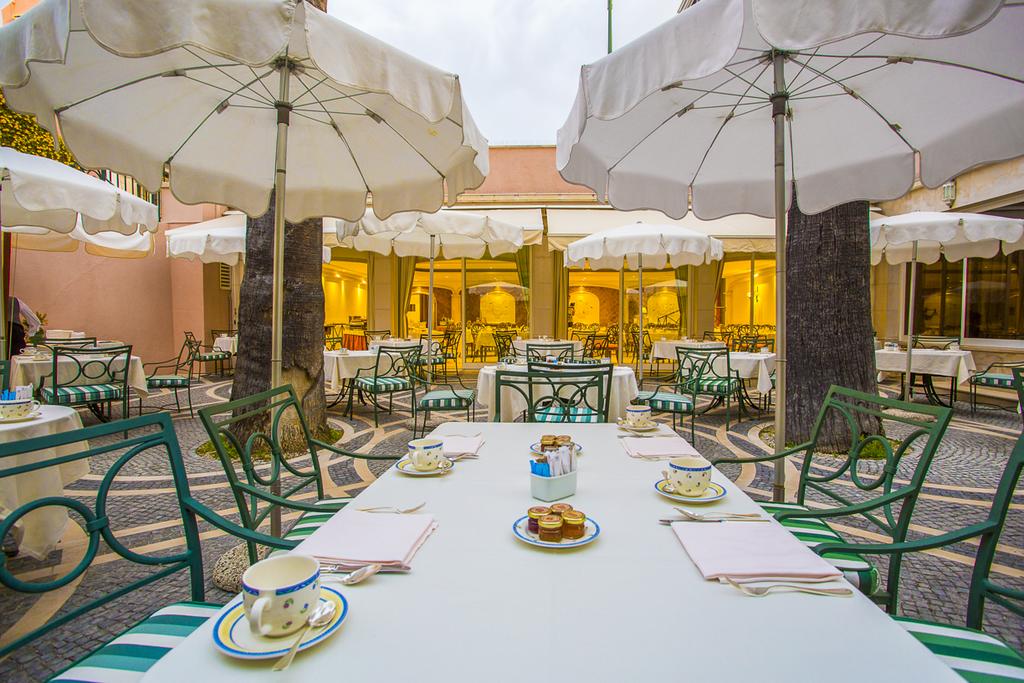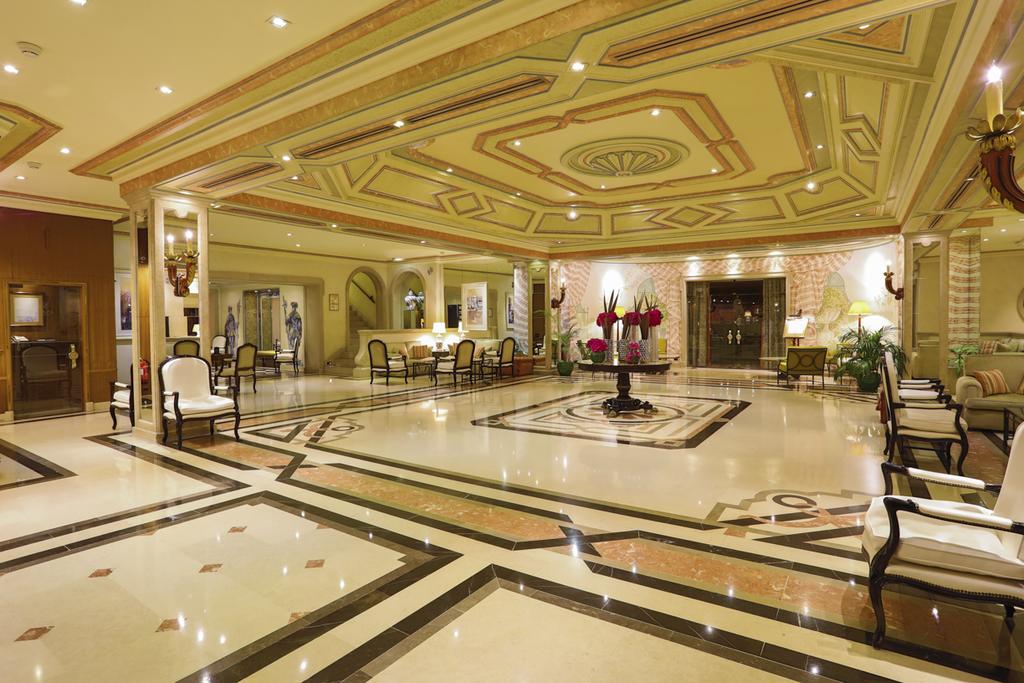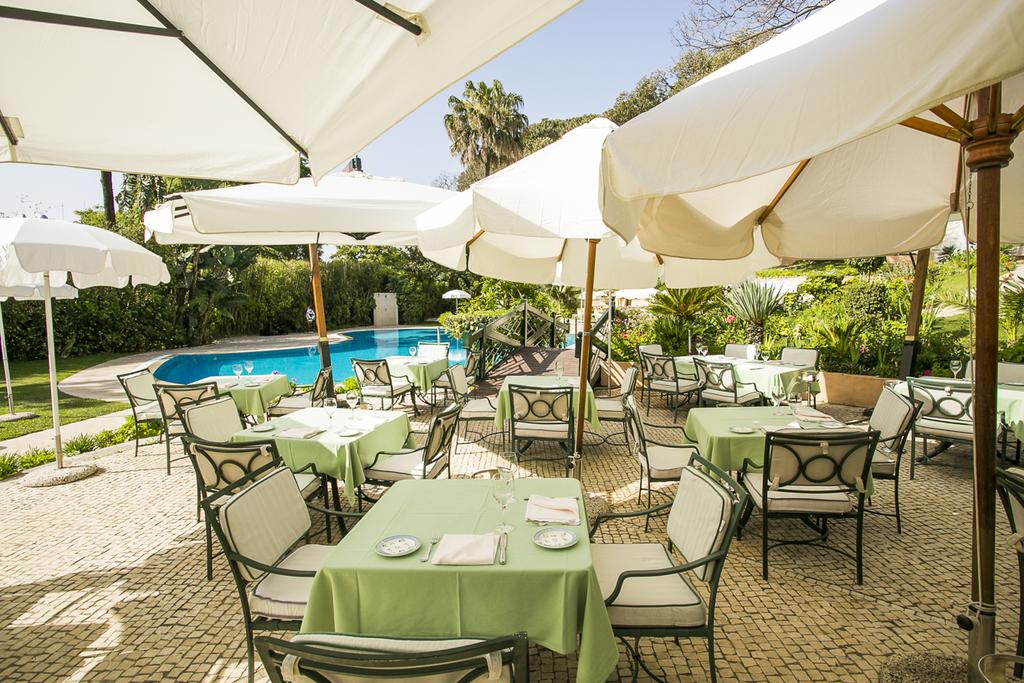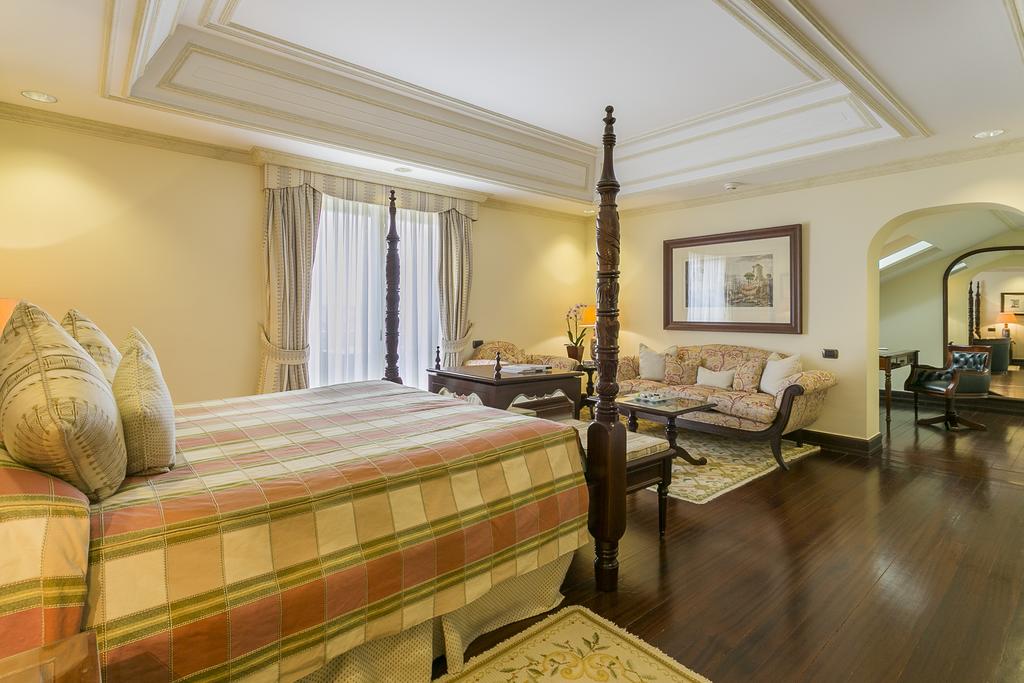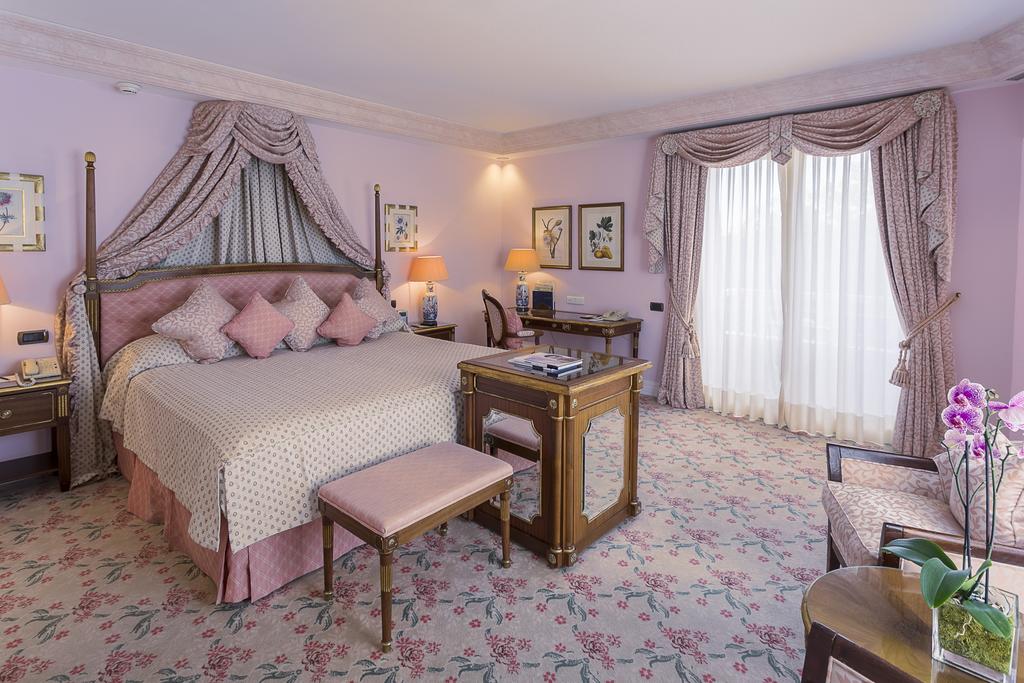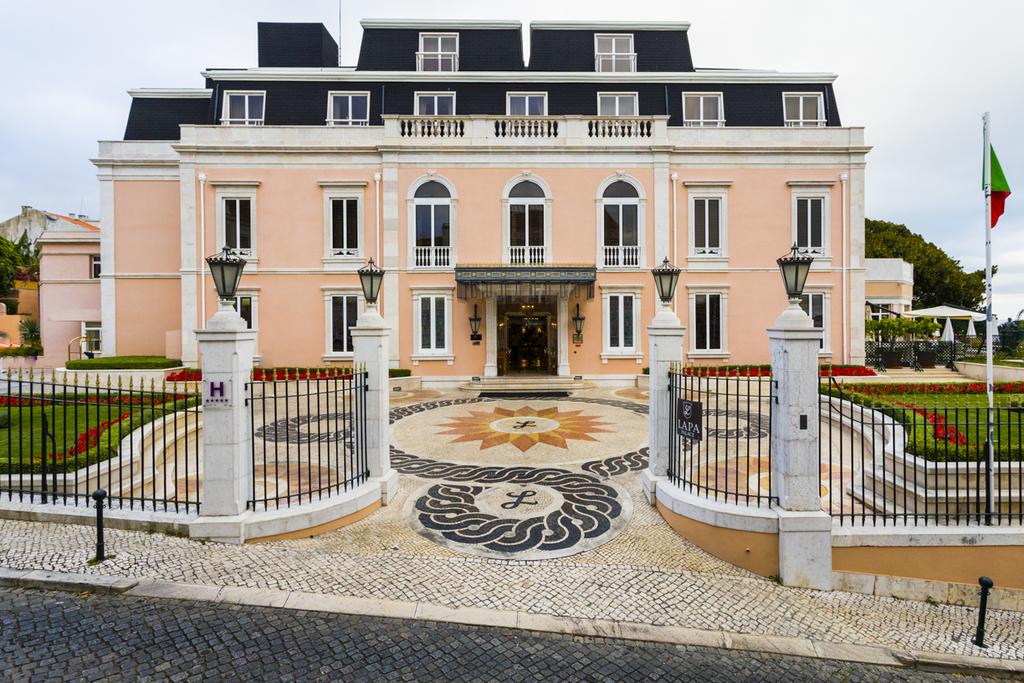里斯本拉帕宫殿酒店
Olissippo Lapa Palace, Lisbon
www.lapapalace.com/en/Menu/Home.aspx
1755年,里斯本著名的大地震之后,科武港的第一位男爵在圣多明格斯街上搭建自己的房屋,从此开启了里斯本Lapa区的建设。Lapa的意思为“荒野之地”,而数百年之后,这片原本的荒野山丘早已变了模样。它依山傍海,花园林立,聚集着众多皇家宫殿与异国风情建筑,是如今里斯本使馆区的所在地。而坐落于中心地带的Olissippo Lapa Palace里斯本拉帕宫殿,则是Lapa区从荒芜到繁盛的代表性建筑。
大地震后过了115年,一位子爵在拉帕区为儿子建了一座漂亮的房子,没想到儿子并不喜欢,于是最终房子被卖给了当时的参议员Valenças伯爵。1883年,伯爵决定把房子重修为一座宫殿,三年后,伯爵拿到了房屋重修许可便立即开始动工。颇具人脉的他几乎动用了自己所有的艺术家朋友,共同出谟划策来建设这座宫殿,大有现今顶级品牌与众设计师跨界合作之势,在当时可以说是先锋之举了。
帮助建设宫殿的艺术家中,包括19世纪葡萄牙最著名的艺术家兄弟拉斐尔・皮涅罗和哥伦巴诺(Rafael Bordalo Pinheiro 与Columbano),他们分别是陶艺师和画家。拉斐尔・皮涅罗为宫殿打造了家具和瓷砖,而哥伦巴诺,这个被称作是“拥有破碎灵魂”的现代主义画家,则为宫殿舞池的墙壁和穹顶亲手作画,以“穿越时光的舞蹈”为主题,描绘了那个时代的贵族生活剪影,其中包含对19世纪几位葡萄牙伯爵和子爵的形象刻画,手法细腻典雅,极具观赏价值。
伯爵派人在原来的房屋上加盖了塔楼,从而可以在Lapa山顶欣赏到里斯本风景和塔霍河。塔楼同时也是伯爵的衣帽间,因为他喜欢边观赏风景边装扮自己,看来美丽的风光也能给伯爵的穿搭带来灵感。房子后面原本的一块绿地被改造成了一座美轮美奂的花园,使整个宫殿达到建筑与景观的平衡。
这座华美的宫殿在当时吸引了众多里斯本的贵族前来社交聚会,一度犹如《了不起的盖茨比》中的繁华盛况,逐渐成为颇具盛名的一处名流社交场所。
一直到1988年,这座私人豪宅被伯爵的家人卖给了Simões de Almeida家族,他们把这座宫殿改造成了一座酒店拉帕酒店。而酒店的改造却异常坎坷,负责改造的建筑师阿尔贝托(Alberto Cruz)虽然技艺高超,却未能完成任务,因为改造刚刚开始他便不幸离世。于是,他的儿子被委任继承父亲未完成的工作。为了保留宫殿原有的外观,以及内部珍贵的细节和房间风格,建筑师投入了大量的工作,而重修过程中,在地下室意外发现的导水渠阻碍了工人们的工作,因为当地严格的建筑条规,他们不得不用石头降低水渠后才能继续,这一切整整耗费了5年时间,终于,在1992年,拉帕酒店对外开张营业。
酒店对宫殿原有设计的保留有着深远的意义,它是葡萄牙社会的重要历史见证,人们从中得以了解19世纪里斯本贵族的生活方式与人物关系。如今酒店的路易十五房,曾是当时的女宾会客室,女客们遵照着路易十五时期的社会准则,在其中谨慎而保守的进行社交活动。阿尔贝托房则由宫殿的舞池改造,它和凯鲁斯房中都保留着伯爵居住时期的彩色玻璃和手工家具,以及有着170年历史的地毯。当然,拥有最佳风光的则是由伯爵衣帽间改造的塔楼套房。十年后,东方快车酒店集团收购了拉帕酒店,并在2002年在其中修建了一座别墅,增加了12间客房和两间套房。到了2009年,Olissippo酒店集团接手酒店,拉帕酒店最终成为Olissippo拉帕宫殿酒店。
历经百年的蜕变与更迭,这座宫殿如今竟越发熠熠生辉。来到酒店,一位热情有礼的老绅士早已在门口等候我们,而距离中国大使馆只有几步之遥也让人倍感亲切。
酒店共分为三个部分,宫殿花园和拉帕别墅,109个房间分布其中,每一间房不仅享有不同的景观,且设计有不同的风格:装饰艺术殖民地风格阿尔及利亚风以及新古典主义。而所有房间内都装饰有传统的葡萄牙瓷器,来自百年传世瓷器品牌 Vista Alegre。宫殿历久经年的设计固然使人赞叹,而作为一家酒店,它由里而外的精致细节体现了不朽的贵族品质,这才真正使我们沦陷其中。
最让我们印象深刻的是酒店最基本的配置床,长途跋涉后疲累的身体急需休息,而拉帕宫殿的床可以说是我们睡过的最舒适的床,床垫有着非常细密的弹簧分布,最大程度的与身体贴合,不小心身陷其中的我们竟然差点错过晚餐。而床尾的电视柜也“机关重重”,外表看起来只是普通柜子,触碰按钮后,电视从里面缓缓弹出,并且可以360°旋转,配合住客在房间各处休闲。虽然现今的五星级酒店为打造优质的顾客服务花样百出,而像这样能从本质打动人的细节才是人们的真实需索。
房间内的香氛,则是拉帕宫殿高贵基因的灵魂体现。一间酒店的气息是否令人舒适非常重要,拉帕宫殿内所独有的香氛“葡萄牙之水”,前调微酸,中调甜美,后调内敛,闻起来愉悦又时髦。不为人知的是,这款香水其实有着150年的历史。 19世纪意大利国王的女儿玛利亚公主嫁给葡萄牙国王,带到葡萄牙的就是这一只香水,后来酒店与Helleboro合作,在一本古老的意大利香水书籍中找到了这款香水的配方,将其还原。这份承载着历史和故事的香气,更加使人着迷。
After the earthquake in Lisbon in 1755, the frst baron of Porto Covo built its own house on S. Domingos Street, starting the creation of the Lapa district in Lisbon. Lapa means ”Moorish rock”, and centuries later, this original wilderness has already changed its appearance.It is surrounded by mountains, seas and gardens, with many royal palaces and exotic buildings. It is now home to the Lisbon Embassy District. The Olissippo Lapa Palace,located in the heart centre, is a representative building to show the transformation fromthe desert area to the prosperous Lapa district.
115 years after the earthquake, a Viscount built a beautiful house for his son in Lapa district, however, his son didn’ t like it. Not expecting this, the house was eventually sold to the then Senator, Count of Valenças. In 1883, Count decided to transform the house into a palace. Three years later, the Count started construction immediately after he got the license to renovate the house. Having wide connections, he asked all his artist friends to get together and work out plans for the construction of the palace. Similar to the current trend of crossborder cooperation between top brands and designers, what Count Valenças did then was truly pioneering.
Among the artists that helped to build the palace were the 19th century Portuguese‘s most famous artist brothers, Rafael Bordalo Pinheiro and Columbano, who were ceramist and painter. Raphael Pinheiro created furniture and ceramic tiles for the palace, while Columbano, known as ”painter of broken souls”, painted the walls and ceilings of the original ballroom using the theme, Dancing through Times, depicting the aristocratic life of that era, which includes the portrayal of the image of several Portuguese Count and Viscounts in the 19th century. The technique is delicate and elegant, and is of great appreciation value.
The Count sent people to build towers on the original houses so that they can enjoy the scenery of Lisbon and the Tagus River on the top of Lapa Peak. The Tower was the dressing room of the Count, who loved to watch the beautiful views while he was getting ready, it seems beautiful scenery can also bring inspiration to Count‘s wear. The original green space behind the house was transformed into a beautiful garden, which allowed the entire palace to achieve a balance between architecture and landscape.
The Palace became a wellknown celebrity social place by the glow of its social gatherings and balls, just like the scenes in The Great Gatsby, attended by the elegant aristocracy of Lisbon.
Until 1988, this private mansion was sold by the Count‘s family to the Simões de Almeida family, who transformed the
palace into a hotel, the Lapa Palace. The renovation of the hotel was unusually hard. Although Alberto Cruz, the architect responsible for the renovation, was highly skilled, he failed to complete the task because he unfortunately passed away when the renovation started. Thus, his son was appointed to continue his unfinished work. In order to preserve the original appearance of the palace, as well as the precious details and room style of the interior, the architects put a lot of work into them. Another reason that postponed the opening of the hotel was that during the construction an aqueduct was found in the basement of the building; due to the strict local architectural regulations, they had to lower it by using rocks. The renovation 5 years. Finally in 1992 the hotel was ready for the public.
The preservation of the original design of the palace is of great significance. It is an important historical witness of the Portuguese society, from which people can learn about the lifestyle and character of the Lisbon nobles in the 19th century. The Louis XV room of the hotel is the then guest room of the female guests,where female guests followed the social norms of the Louis XV period,conducting social activities cautiously and conservatively. The Alberto room was transformed by the palace‘s dance floor. It and the Eça de Queiroz room retain stained glass and handmade furniture from Count‘s residence, as well as 170yearold carpets. Of course, the one with the best scenery is the Tower Suite transformed by the Count‘s dressing room.
Ten years later, OrientExpress acquired Lapa Palace and built a villa in 2002, adding 12 rooms and two suites. In 2009, the Olissippo Hotel Group took over the hotel. The Lapa Palace eventually became Olissippo Lapa Palace.
After centuries of transformation and change, the palace is now more and more brilliant. When we arrived at the hotel, a warm old gentleman was waiting for us at the door, and the distance from the Chinese Embassy was just a few steps away, which is quite reassuring.
The hotel is divided into three parts, the palace, the garden and the Lapa Villa. There are 109 rooms. Each room not only has different views but also different styles: Art Deco, Colonial style, Algerian style and Neoclassical themes. All the rooms are decorated with traditional Portuguese porcelain, from the centuryold porcelain brand Vista Alegre. The design of the palace has been admirable for many years, and as a hotel, it demonstrates immortal aristocratic qualities from the fine details from the inside out, and this really makes us fall in love with it.
What impressed us most was the basic configuration of the hotelthe bed. A tired body after the long journey was in urgent need of rest,and the bed of the Lapa Palace was the most comfortable bed we have ever slept in. The mattress had a very fine spring, that fit the body with the greatest degree. We actually almost missed the dinner because of the deep sleep. The TV cabinet at the end of the bed is ”equipped with gadgets” but looks like an ordinary cabinet. After pressing a button,the TV slowly pops up from the inside, and it can be rotated 360°to accommodate the guests relaxing around the room. Although today‘s fivestar hotels are full of tricks to create highquality customer services,the details that impress the hearts from the inside are people‘s real needs.
The fragrance in the room is the embodiment of the noble gene of Lapa Palace. It is very important whether the atmosphere of a hotel is comfortable or not. The unique fragrance in the palace of Lapa, ”Water of Portugal” (Eau de Portugal), is slightly sour, sweet in the middle,reserved in final tone, and altogether pleasant and stylish. Unknown to the public, this perfume actually has a history of 150 years. In the 19th century, the daughter of the Italian king‘s daughter, Princess Maria,married the king of Portugal and brought it to Portugal. Later, the hotel collaborated with Helleboro to find the perfume‘s recipe in an old Italian perfume book. This scent, which carries history and stories, is now even more fascinating.





